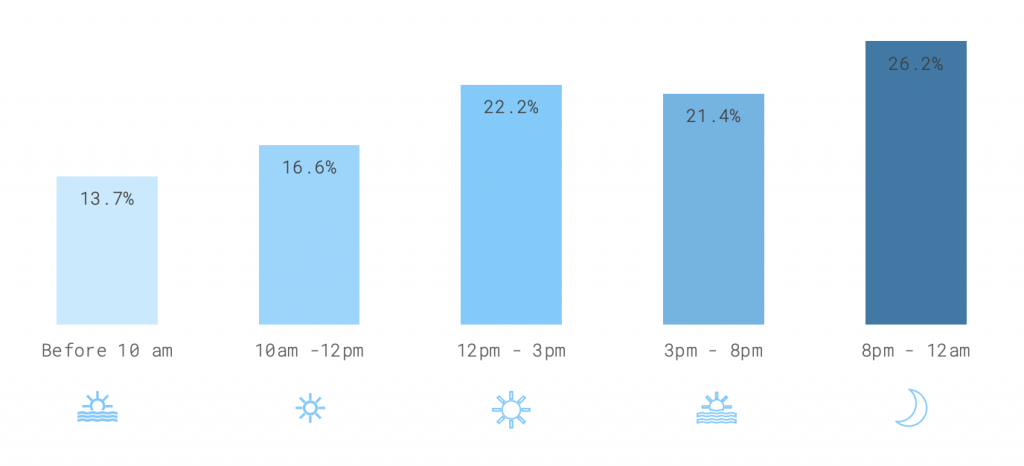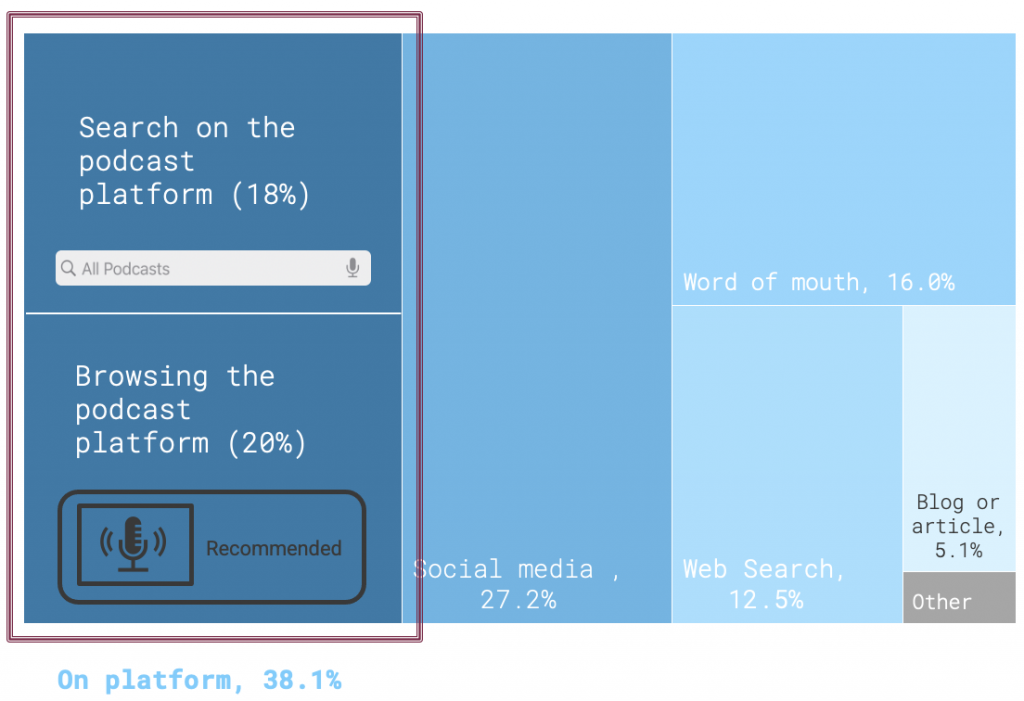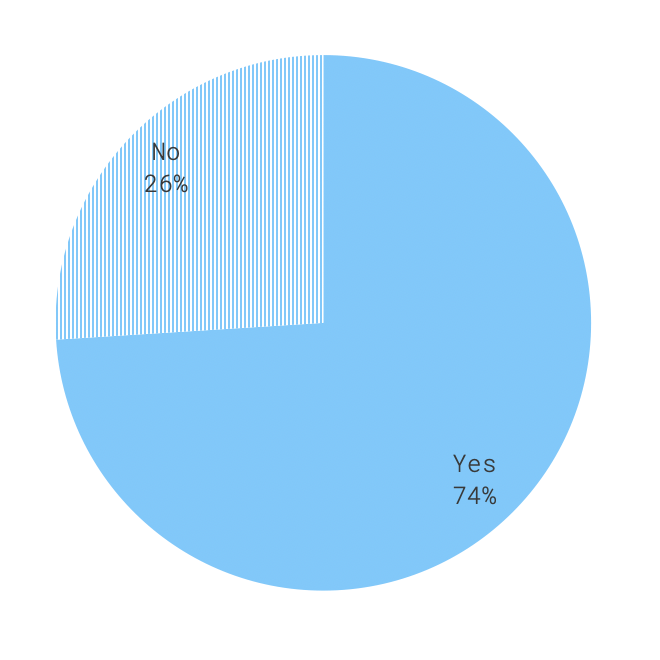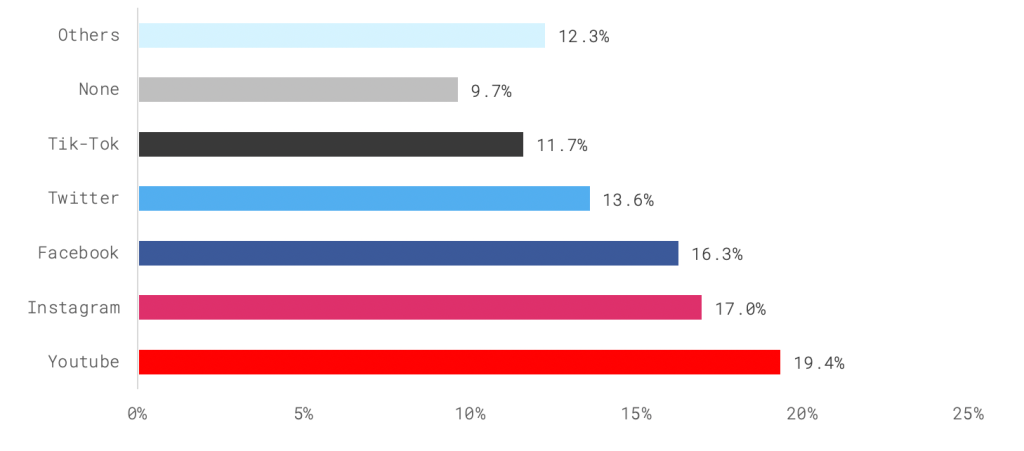In Fall 2021, we at Voxalyze conducted a Podcast Discovery & Consumption report to understand better how users discover and consume podcasts. We surveyed listeners across four countries (USA, UK, France, Germany) to assess local differences.
In this article, we will uncover seven learnings and their practical implication on growing your podcast’s audience.
1. Consider the Podcast audience
There is a higher percentage of male listeners than female listeners. While every podcast will attract a different audience, this means that there are more males than females looking for audio content.

In the UK, France, and Germany, the number one age group is 18-29 years old, while the 30-44 years old dominate in the US.

It is also interesting to note that 48% of the listeners started listening in the last 12 months. You should keep this in mind when planning your content as a podcast producer: a large proportion of users are newbies and it could be worth repeating some “podcast rules”.
2. Be on every podcast platform
We often hear from podcast producers: my show is on Apple (Podcasts); why should I go on other platforms?
First of all, a podcast listener consumes audio on 1.9 platforms on average. This could mean Apple Podcasts on his mobile while on the go and Spotify on the laptop at the office or at home. And the dominant platform currently is Spotify, not Apple Podcasts.

Potential listeners will not install a new listening app and change their habits only to listen to your show. Joe Rogan is probably the only exception out there.
Amazon Music is relatively new but is already the third-largest listening platform with almost as many users as Apple Podcasts.

Google Podcast is a must to reach Android users, and so is Deezer, especially if you are targeting the French market.
We can’t emphasize this enough: to grow your podcast, go where your audience is. And that is on a multitude of listening platforms. If you want to dig deeper in terms of platforms usage, we recommend download the full survey,
3. Consider publishing time
Publishing time is often overlooked by podcast producers. It’s a mistake. Consider a user that is following (or subscribing to) a few shows and listens to podcasts on her commute back from work in the evening. When she goes into her podcast listening app, what will she see first? The episode the most recently released from all the shows she follows. You want that episode to be yours.
Furthermore, just like social media platforms favors content that get shared/liked right after being published, the listening platforms may be factoring your listen numbers right after publishing in their ranking algorithms.

It may be worth considering and testing different publishing times.
4. You must have an on-platform promotion strategy
38% of listeners discover new content directly on the platform, either by typing what they are after in the search bar or by browsing the various lists or recommendations. This is the number one way for users to discover new podcasts. As podcast producers, you absolutely need to have a strategy in place for on-platform visibility.

Furthermore, 74% of listeners have already used the search bar to find content. Just like SEO (Search Engine Optimization) is key in having your website rank high on Google or Bing, PVO (Podcast Visibility Optimization) is paramount in having your podcast rank high on Apple Podcasts, Spotify, and the other listening platforms.

5. Invest in your podcast assets
The assets of your podcast are the podcast title, author name, show description, and episode titles and descriptions. Those are important in two aspects:
- This is the data the listening platforms are using to rank you show on specific search queries
- This is what a potential listener will see first when stumbling upon your show for the first time
Putting the algorithm aside, what potential listeners care the most about are the topic (or what your show is about) and its description. So make sure you provide those future listeners with enough information on your awesome content.

Copywriting is both an art and a science as you need to write for both the algorithms (that will put your content in front of potential listeners) and humans who will then click/tap on the show assets to start listening.
We update our blog regularly with articles and tips on copywriting for podcasts.
6. Be present on Social Media
As we have seen above, Social Media is the second biggest channel for content discovery. You need to be present there as well. Depending on your content and audience, you may focus on one specific network or several.
Another thing that the survey reveals is that YouTube leads the way. Some listeners use the video platform as an audio platform, so adapting your audio content to generate video content is a great idea.

There is much more information and details in the survey itself, but if you need to keep in mind only a few things to grow your podcast, the six points above are the main levers.
